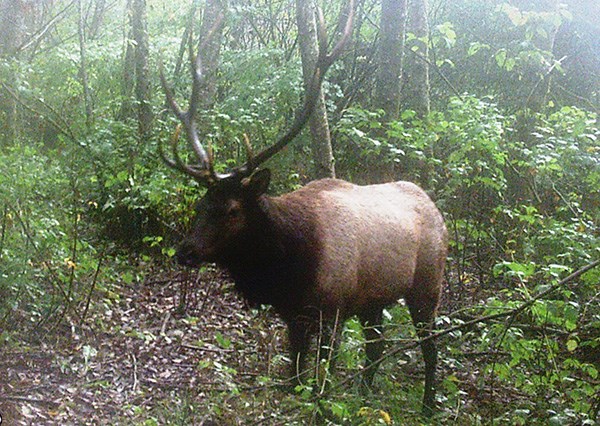Motorists in Squamish need to be on the lookout for elk on the highway near the Adventure Centre.
Recently the fourth elk since 2012, a 10-month old bull, was hit and killed by a vehicle about 200 metres north of the Squamish Adventure Centre on Highway 99, according to Meg Toom, WildSafeBC program coordinator.
Two were killed in 2012, the first a pregnant female, another was killed in July of 2013 and this young, 600-pound bull last week.
All that remains of this herd, as far as Toom knows, is a very large bull and three female elk. It is likely all three females are pregnant and due in the next month or so, Toom said.
A local grizzly bear biologist took the young bull’s carcass, which was frozen and will be used for bait in a grizzly bear and wolverine study. “Most of the animals that are hit typically are destroyed, taken to the landfill,” Toom said. “Recycle, reuse: it is a really unfortunate situation but it can be turned into at least a positive outcome. [The elk] is going to be used for research.”
Squamish forests were once replete with roaming elk, but they were hunted almost to extinction, Toom said.
 To repopulate the area, a herd of 26 elk was brought into the upper Squamish Valley in 2006 by Ministry of Forests, Lands and Natural Resource Operations
To repopulate the area, a herd of 26 elk was brought into the upper Squamish Valley in 2006 by Ministry of Forests, Lands and Natural Resource Operations
“That herd is doing really, really well – there is plus-60 or so elk,” said Toom.
The ministry brought in eight more elk in 2011 and put them in the Mamquam River Watershed. “It seems to be that small herd that has basically hunkered down right by the highway,” Toom said, adding the remaining elk in the herd are utilizing the habitat just north of the Adventure Centre and west, across Highway 99 near Capilano University.
Toom said she has had some reports of elk eating the grass at Squamish Elementary School.“They are completely habituated to the traffic,” she said. “There is lots of green growth right now, they are finding lots of food. It is just really unfortunate, the proximity to the highway.”
Toom said vehicle collisions are dangerous for people as well as the animals; elk can be as large as 1,000 lb. “What we want people to be aware of is, particularly at night when it is pitch black, these animals just blend in – and they are there – and there are deer signs, but we get habituated to signs,” she said. “Particularly in this area, we need to be very vigilant, do the speed limit and keep your eyes constantly scanning.”
She said it is important motorists don’t stop and get out of their cars to take pictures of the creatures. “Any kind of wildlife, you don’t want to stop,” she said. “Don’t take any wildlife management into your hands, not a good plan.” To report wildlife encounters,call 1-877-952-7277.



